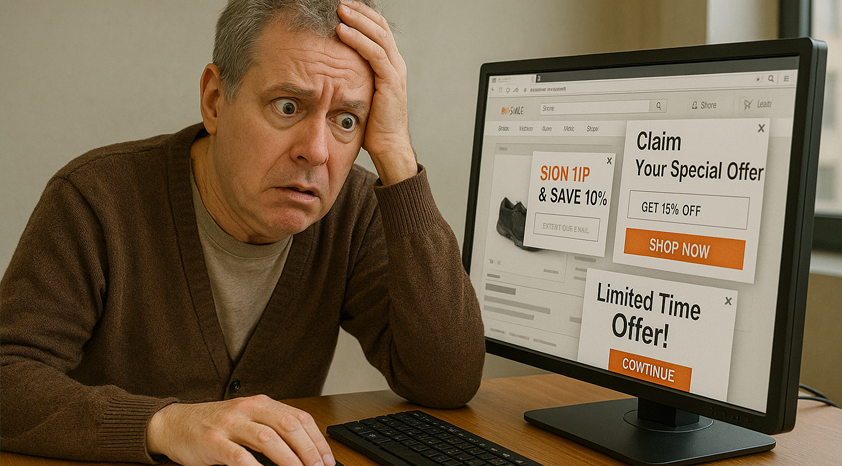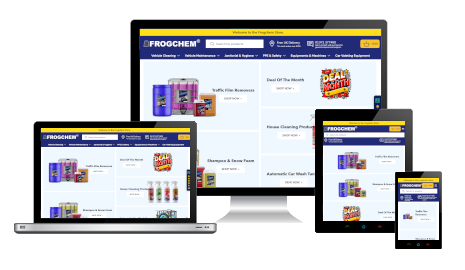
Conversion-Optimized Shopify Themes: Marketing Claims vs. Reality
A quick look in prominent e-commerce communities is all it takes: self-proclaimed “conversion-optimized Shopify themes” are sprouting up everywhere. With catchy names almost always featuring variations of CRO, Boost, Conver, or Opti, these themes promise nothing less than to automatically turn your store into a high-performance revenue machine. But how much substance really lies behind these claims? In this post, we’ll take a closer look at the marketing spiel and examine the reality behind these supposedly amazing conversion-optimized Shopify themes.
What Are “Conversion-Optimized” Shopify Themes?
Conversion-optimized themes are Shopify templates designed with special features and layouts aimed at increasing sales (conversions). Vendors typically boast of faster load times, psychologically placed conversion elements, and built-in features that otherwise would require extra apps. Typical attributes include built-in countdown timers, trust badges, pop-ups, upsell sections, prominent call-to-action buttons, or an optimized mobile layout—all intended to reduce cart abandonment and boost revenue.
Many of these themes come about when developers take an existing standard theme (often a free Shopify theme), half-heartedly modify it, and sprinkle in a few conversion gadgets. They then market it as a “magic weapon”—for a fee, of course. Store owners hope that a simple theme switch will solve complex conversion issues. But that’s where skepticism should kick in. A Shopify expert friend put it aptly: “The same theme in the hands of 50 different designers will have 50 different conversion rates. A lot of what makes a theme work is the work you put into it.” In other words: a theme alone doesn’t generate conversions—what matters is how you use it, populate it with content, and tailor it to your audience.
Tempting Promises from Theme Vendors
The marketing pages for these conversion themes often read like the cure for all shop problems. Some common promises and claims include:
- “Higher Conversion Rate Guaranteed”: Vendors showcase impressive success stories (e.g., “Doubled conversions from 3% to 6%!”), sometimes backed by charts or customer testimonials. Such statements imply that the theme itself is responsible for the conversion jump—a bold oversimplification of complex causes.
- “All Essential CRO Functions Built-In”: Instead of relying on multiple apps, the theme allegedly includes everything you need for conversion rate optimization (CRO). This might include urgency notifications (e.g., “Only 3 left in stock!”), free-shipping banners (“Free shipping on orders over €X”), social proof (“Over 1,200 customers have bought this”), cart upsells, and more. The idea: equip your shop with psychological triggers to nudge customers toward purchase.
- “Lightning-Fast Load Times”: Many of these themes promise lean, minimal code and high PageSpeed scores. They argue that standard themes get bloated with apps, whereas their product delivers all features app-free and thus performance-friendly.
- “One-Time Purchase, No Ongoing Fees”: Unlike monthly-subscription apps or SaaS tools, these themes are bought once. This supposedly saves money in the long run by eliminating the need for numerous apps (“Save hundreds on app fees” is the typical pitch).
Example of a “conversion-optimized” cart layout: This sample design combines various sales-psychology elements: a friendly congratulations message (“Great choice! …”) after adding to cart, a progress bar toward free shipping, a social proof note (“Melanie & 2,407 others love this product”), a scarcity warning (“Items in cart aren’t reserved!”), upsell suggestions (“Add something extra?”), plus trust elements like shipping and returns guarantees. These features aim to guide customers to checkout and increase average order value. Yet whether these tricks provide a lasting conversion boost heavily depends on the overall user experience and the store’s credibility.
The Reality: Core Essentials Often Get Overlooked
As impressive as these feature lists sound, in practice many major flaws emerge. Numerous hyped conversion themes prove underdeveloped in areas crucial for a professional online store:
We Help You Optimize Your Shopify Store
Call us at +49 (0) 30 – 40 36 38 90 or
- Poor Translations and Copy: Since many of these themes are marketed internationally, the default text is often awkwardly translated into German or riddled with errors. Navigation labels, buttons, and notices can sound machine-translated. By contrast, Shopify’s official Theme Store enforces strict copy quality standards—every line must be grammatically correct and error-free. Many “conversion miracle” themes fall far short of that bar.
- Outdated or Buggy Code: Some themes are based on older Shopify versions or are patched-together code fragments. They may not even support Online Store 2.0 features (from 2023) or other best practices. This can cause compatibility issues with new Shopify functions or apps and hurt performance despite contrary claims.
- No Regular Updates: Shopify constantly evolves—new features (e.g., Metafields, Sections Everywhere, Shopify Markets) and API changes arrive regularly. Official themes get continuous updates to stay compatible and secure. Externally sold themes often lack this: some receive only sporadic updates, others none after purchase. In online forums, users frequently warn that external themes are not supported long-term, unlike reputable official ones.
- Subpar Aesthetics and UX: Beauty is subjective, but some themes simply look unprofessional or cluttered. Here a banner, there a pop-up, below a countdown… Balancing sales elements with appealing design isn’t every vendor’s forte. Some layouts feel like knockoffs of free themes—just with extra flashing. This can erode brand consistency and undermine customer trust.
- Just Modified Standard Themes: A little-known “secret” is that many of these products aren’t built from scratch. Developers take a free theme (e.g., Dawn or Debut) and layer on extra sections and scripts. That isn’t inherently wrong, but it means you’re essentially paying a high price for a tweaked clone of a free theme. If done sloppily, leftover code or redundancies remain. Store owners struggle to understand why they should shell out hundreds or thousands of euros.
In summary: Many conversion-optimized themes dazzle with specialized features but fall short on basic requirements like quality, maintenance, and design. These shortcomings explain why many users feel let down when the promised conversion magic fails to appear—and instead, new problems surface.
Why Aren’t These Themes in the Official Shopify Theme Store?
One obvious question is: If these themes are so great, why aren’t they in the official Shopify Theme Store? The answer is telling. Shopify subjects every theme in its store to a rigorous review process. The quality standards are high, covering clean code, performance, localization, accessibility, and ongoing support. Many off-market themes wouldn’t pass this scrutiny because their code quality simply isn’t up to par. Installing them could feel like accidentally running WooCommerce—complete with DIY charm, instability, and maintenance headaches.


Even if an external theme is technically solid, continuity remains an issue. Shopify requires Theme Partners to regularly update their themes to align with platform changes. Buyers in the official store expect that the theme will be supported, updated, and bug-fixed going forward. Otherwise, Shopify will pull it. In short, if a theme were good enough for the official store, it would be there. Its absence is no accident—it indicates unmet quality, support, or other requirements.
Conclusion: Choose Your Theme Wisely
“Conversion-optimized Shopify themes” sound like a tempting shortcut to more revenue. Who wouldn’t want a simple theme install that suddenly boosts sales? Unfortunately, reality shows that no theme can compensate for poor products, ineffective marketing, or lack of customer trust. Optimization is a holistic process—covering product offerings, usability, load times, content quality, and more. The theme is just one building block.
Before falling for grandiose promises, consider this: a solid, well-maintained standard theme with targeted customizations often does more than a so-called miracle theme. Free Shopify themes (like Dawn or Horizon) or officially vetted premium themes provide a robust foundation—performant and continuously improved by Shopify or their developers. From there, you can add selected apps or custom features to get exactly what your store needs. Yes, this takes more effort (or the help of an experienced Shopify agency), but you retain control over quality and future viability.

In short: Approach sensational marketing claims with skepticism. Check that any touted theme meets the fundamental requirements and is supported by its developer. And consider whether a strategic optimization of your existing theme isn’t a smarter move than chasing an unknown miracle theme. Ultimately, the surest path to higher conversions is customer understanding, testing, and continuous improvement—not off-the-shelf miracle themes from the backroom. With clear eyes and the right partner, you’ll make the best choice for your Shopify store.


